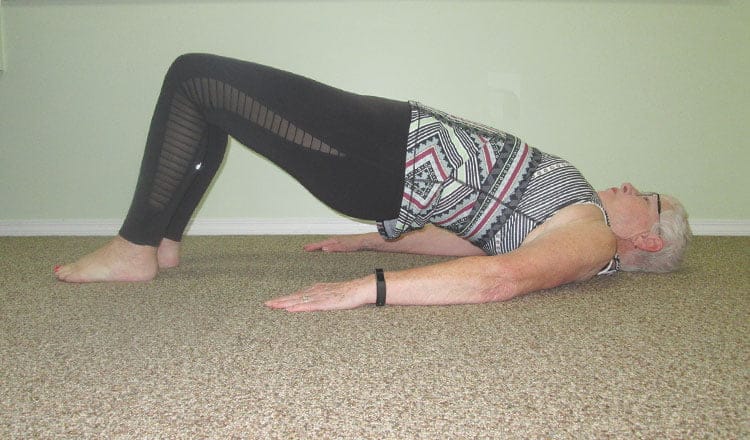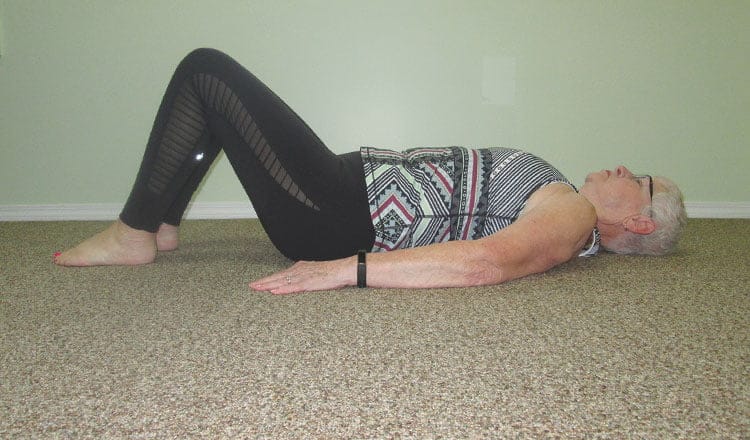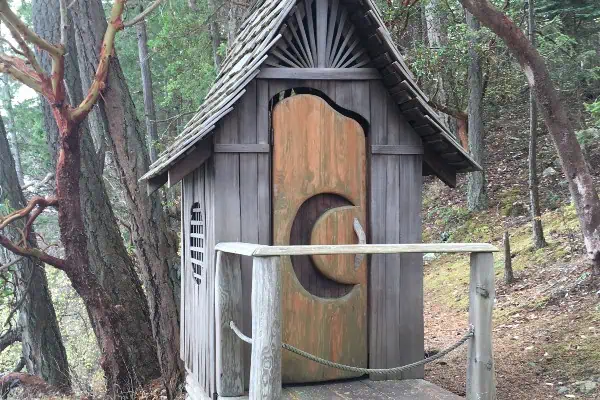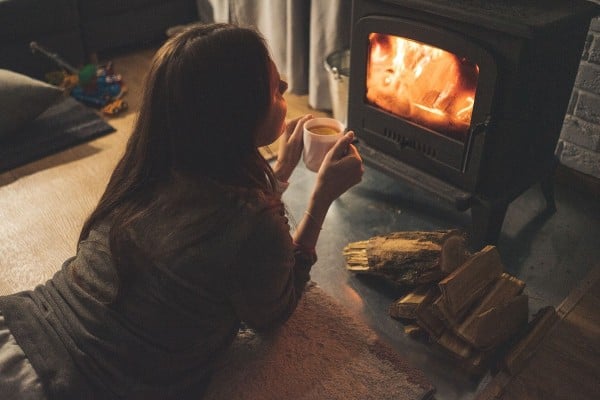STARTING POSITION (above): Lie on your back with your knees bent and feet on the floor. Your knees and feet should be in line with your hips. Inhale to prepare drawing in your abdominal muscles as if you were trying to get your belly button to touch your spine. Engage your glutes (bottom) and stabilize your shoulders

Keep your glutes and abdominals engaged as you lift your hip bones to the ceiling while pushing your knees towards the opposite wall. Be very careful not to come up on to your neck and not to arch your back

Repeat four more times
At the age of 50, with a strong recommendation from a friend, I took my first Pilates class. I was an immediate convert, and became a fully certified Stott Pilates Teacher within the year. Fourteen years later, I run a Pilates studio in Granger, which offers – among other classes – a number of options tailored to those over 55.
For us of the older generation, staying fit is essential, but so many exercises can be hard on our bodies. Pilates offers a great way to stay in shape without stressing your joints, improves balance and actually reduces the risk of injury while it helps you build muscle.
The 3 B’s of Pilates: bones, back, and balance
Pilates is a unique combination of exercises that target a wide range of muscles at the same time, while always working your core-stabilizing muscles. By using and strengthening your core, these movements help to protect your back – both while you’re in the class and while you’re doing your day-to-day activities.
Pilates also works your shoulder girdle (the set of bones that connect to the arm on each side of your body) to open up the front of your chest and counteract rounded shoulders keeping you standing up tall and straight. This upper back strengthening and core stabilization are invaluable to build balance and prevent falls.
Using the tension of the Pilates springs during a class is especially beneficial for older adults. The springs provide resistance, which helps to build and strengthen bones. Most of the moves can be modified to accommodate those with osteoporosis. For those looking to add weight-bearing exercise into their routine in a safe environment that won’t stress their joints, we offer classes that use the Pilates chair and the reformer.
The Shoulder Bridge: A simple exercise to strengthen your lower body
For older adults who wish to practise Pilates at home and who may have osteoporosis, spinal flexion and rotation should be avoided. Three simple exercises that could be easily added to a daily routine are toe taps, prone leg lifts and the shoulder bridge.
In this article, Yvonne – who is 75 years old – will illustrate how to properly do the shoulder bridge. This is an excellent exercise to strengthen the gluteal muscles, the core, and the hamstrings, all of which contribute to good hip and back health.
Pilates is an excellent way for older adults to develop a strong core and a strong back, gain long, lean muscles and flexibility, and prevent injury while having fun in the process.
By Ann Asquith. As the Yukon’s professional Pilates Centre, The Studio offers over 55 Pilates classes per week with 14 certified teachers. Visit The Studio to see what we’re about or contact us today to find out which class is right for you. We are located at 81 E Wilson Drive in the Whitehorse neighbourhood of Granger.




